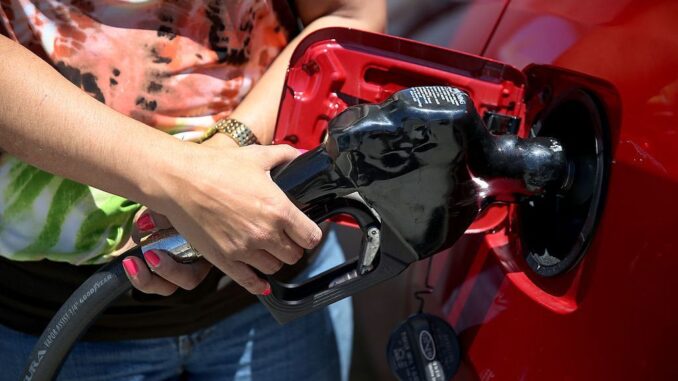
There may be some emotional factors at play when assessing retail gasoline prices, which should continue to test multiyear highs for the time being, analysts told Zenger.
Travel club AAA listed the national average retail price at $3.28 for a gallon of regular unleaded gasoline on Tuesday. That’s about 10 cents higher than one month ago and, according to federal data, the highest national average since late October 2014.
The spike in retail gasoline prices follows a steady run higher for most commodities.
Natural gas prices in the European market continue to test multiyear highs and West Texas Intermediate, the U.S. benchmark for the price of oil, topped $80 per barrel in early Tuesday trading.
As with retail gasoline prices, U.S. crude oil prices are at seven-year highs.

Patricia Hemsworth, a senior vice president at Paragon Markets, told Zenger from New York that at least some of the increase in retail gasoline prices is due to the energy crisis in the European market.
“I tend to look at everything in terms of relationships,” she said. “We can talk about the overall spike in energy prices as a kind of panicky contagion effect from the gas shortage in Europe.”
Soaring natural gas prices are pushing some segments of the energy sector to coal or crude oil to shore up supplies ahead of the winter heating season in the Northern Hemisphere. That in turn creates more tailwinds for the price of crude oil, which accounts for the bulk of what consumers see at the pump.
Hemsworth added that U.S. crude oil production is not increasing and members of the Organization of the Petroleum Exporting Countries decided in early September to stand pat on production levels. With the switch from natural gas to crude oil, that leaves major economic segments competing for oil in an ever-tightening market.

The White House is pressing OPEC to open the spigot to arrest the steady rise in commodity prices, but so far there seems to be no relief in sight.
Even with soaring prices, however, Matthew Kohlman, an associate director for refined products pricing at S&P Global Platts, said seasonal factors that would normally be in play were thrown off by the COVID-19 pandemic.
“Demand destruction is the norm for gasoline after summer, usually dropping 5 percent to 10 percent from August to September,” he said. “But last year’s autumn demand was so abnormally low from the pandemic that normal demand this year feels higher than normal by comparison.”
And like Hemsworth, Kohlman said the “normal global oil geopolitics” are having an impact on prices at the pump.
Despite calls for energy independence, energy markets are global by nature, with factors outside the United States driving prices higher and higher.
Patrick DeHaan, the senior petroleum analyst at GasBuddy, told Zenger from Chicago that prices could cool off a bit, but not much. As long as the price for crude oil and other commodities remain high, consumers will continue to see elevated gasoline prices. But for now, those consumers don’t seem to care.
“Demand hasn’t really responded to the high price much,” he said.
Edited by Bryan Wilkes and Kristen Butler
The post ‘Panicky’ Factors Could Be Behind Higher Gasoline Prices appeared first on Zenger News.
Recommended For You.



Be the first to comment